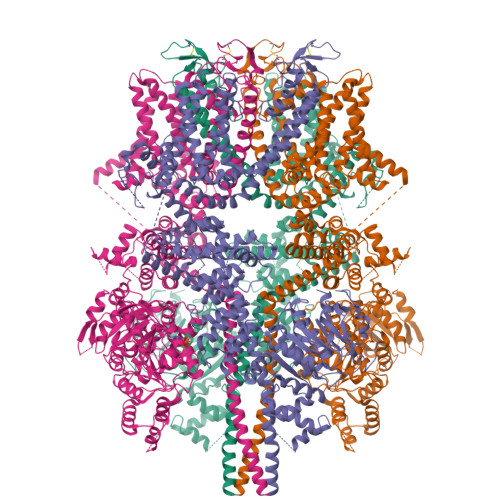Structures of the calcium-activated, non-selective cation channel TRPM4.
Guo, J., She, J., Zeng, W., Chen, Q., Bai, X.C., Jiang, Y.(2017) Nature 552: 205-209
- PubMed: 29211714
- DOI: https://doi.org/10.1038/nature24997
- Primary Citation of Related Structures:
6BCJ, 6BCL, 6BCO, 6BCQ - PubMed Abstract:
TRPM4 is a calcium-activated, phosphatidylinositol-4,5-bisphosphate (PtdIns(4,5)P 2 ) -modulated, non-selective cation channel that belongs to the family of melastatin-related transient receptor potential (TRPM) channels. Here we present the electron cryo-microscopy structures of the mouse TRPM4 channel with and without ATP. TRPM4 consists of multiple transmembrane and cytosolic domains, which assemble into a three-tiered architecture. The N-terminal nucleotide-binding domain and the C-terminal coiled-coil participate in the tetrameric assembly of the channel; ATP binds at the nucleotide-binding domain and inhibits channel activity. TRPM4 has an exceptionally wide filter but is only permeable to monovalent cations; filter residue Gln973 is essential in defining monovalent selectivity. The S1-S4 domain and the post-S6 TRP domain form the central gating apparatus that probably houses the Ca 2+ - and PtdIns(4,5)P 2 -binding sites. These structures provide an essential starting point for elucidating the complex gating mechanisms of TRPM4 and reveal the molecular architecture of the TRPM family.
Organizational Affiliation:
Department of Physiology, University of Texas Southwestern Medical Center, Dallas, Texas 75390-9040, USA.



















